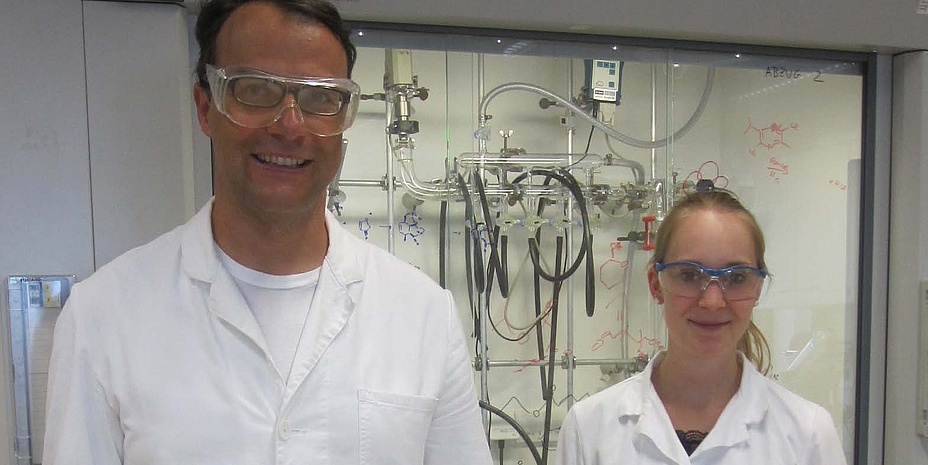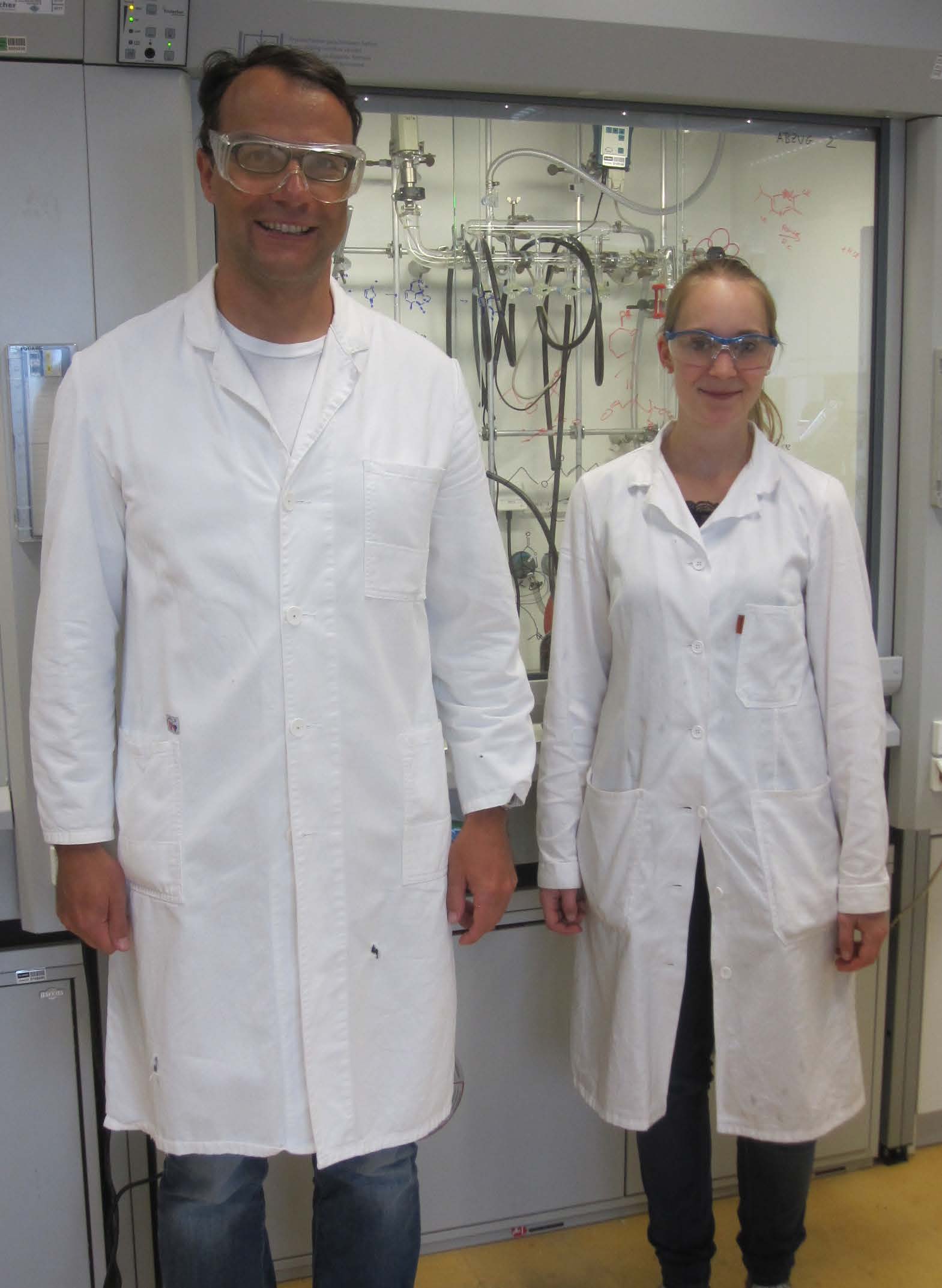Manipulated enzymes: TU Graz researchers set milestone in biocatalysis research

The team led by Heckenbichler and Breinbauer was able to produce cyclopropanes – extremely small ring-shaped molecules in the shape of a triangle – using biocatalysis. Such ring systems, also called three-ring systems, occur not only in many biomolecules, they are also an important structural element in plant protection products and in pharmaceuticals such as contraceptive pills, drugs used to treat asthma and AIDS medications. The work has been published in the current issue of <link https: onlinelibrary.wiley.com toc current>Angewandte Chemie.
The good and the bad ‘hand’ of the molecule
Parallel to this, the researchers also managed to master the chirality of the produced molecule, which is of great importance in the production of medications. Chirality, or the ‘handedness’ of molecules, describes how two molecules of the same atom can be structured in a mirror-image way – either right handed or left handed. One variant of these enantiomers can be useful and the other damaging, and great value is placed today on using only the curative variant in the production of medications. This ensures that medications work very specifically and that no undesirable side effects occur due to ‘chiral twins’. Kathrin Heckenbichler explains the process and result of the biocatalytic implementation of the substrate: ‘To enable an optimum chiral recognition between enzyme and substrate, we designed a substrate with a large residue. By doing this we could ideally exploit the spatial conditions in the active centre of the enzyme to produce a cyclopropane in high enantiomeric purity.’ The researchers managed to produce only the desired enantiomer from the two possible chiral three-ringed molecules.TU Graz as international centre of biocatalysis research
TU Graz ranks among the world’s top institutions in the field of biocatalysis research, and this new study confirms this once more. The research team from TU Graz managed to carry out an important extension of their biocatalytic repertoire to open the door to diverse applications particularly in the ‘green’ production of new medications and the economical production of generic pharmaceuticals, aromatic substances and plant protection products. The aim of this so-called green chemistry, to which biocatalysis can be attributed, is to employ mild and environmentally sound reagents, contain environmental pollution, and save energy and costs. The research work of Kathrin Heckenbichler was initially given start-up funding from acib – Austrian Centre of Industrial Biotechnology and supported by the Austrian Science Fund (FWF). In the NAWI Graz alliance – the inter-university cooperation between TU Graz and the University of Graz – Peter Macheroux, head of the TU Graz Institute of Biochemistry and Karl Gruber from the University of Graz’s Institute of Molecular Biosciences were also involved in the research.This research project is anchored in the <link https: www.tugraz.at en research forschungsschwerpunkte-5-fields-of-expertise human-biotechnology overview-human-biotechnology _blank int-link-external external link in new>Field of Expertise "Human & Biotechnology", one of five strategic research FoE of TU Graz. Participating researchers are members of <link https: www.nawigraz.at en _blank int-link-external>NAWI Graz – Natural Sciences.
Kontakt
Univ.-Prof. Dipl.-Ing. Dr.rer.nat.
TU Graz | Institut of Organic Chemistry
Stremayrgasse 9/4.ZG, 8010 Graz
Email: <link int-link-mail window for sending>breinbauer@tugraz.at
Press contact
Barbara GIGLER, press officer
TU Graz
Tel.: +43 316 873 6006
Mob: +43 664 608736006
Email: <link int-link-mail window for sending>barbara.gigler@tugraz.at





